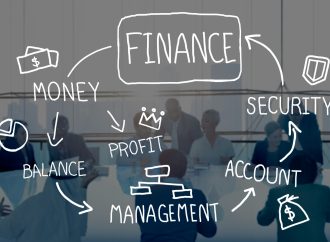Are you considering investing in commercial real estate? It’s an attractive option, but it comes with its risks. Today, we’ll dive into the top three risks facing commercial real estate investments and how to mitigate them for a successful venture. Don’t let these pitfalls deter you from reaping the rewards of a smart investment –
Are you considering investing in commercial real estate? It’s an attractive option, but it comes with its risks. Today, we’ll dive into the top three risks facing commercial real estate investments and how to mitigate them for a successful venture. Don’t let these pitfalls deter you from reaping the rewards of a smart investment – read on to learn more!
Economic Downturn
Commercial real estate investments are complicated and carry a lot of risk. There is always the potential for a decline in the economy, which could lead to decreased demand for commercial property, as well as higher vacancy rates and lower rents. Furthermore, there is the risk of natural disasters, such as hurricanes or earthquakes, which could damage or destroy property already plagued by low occupancy rates. Finally, there is always the risk of fraud or theft, which could mean lost money on investment properties or even loss of life if someone were to get hurt while breaking into a building.
Regulatory Changes
1.1 Regulatory Changes
In recent years, there have been a number of regulatory changes affecting the commercial real estate industry. These changes can have a significant impact on the profitability and sustainability of commercial real estate investments. Here are five of the most important changes:
1. The Volcker Rule
The Volcker Rule is a regulation passed by the US Federal Reserve in 2013 that limits the amount of risk that banks can take in their investments. As a result, many commercial real estate investors have had to reduce their exposure to risky assets such as property development loans and credit derivatives.
2. The Tax Cuts and Jobs Act of 2017
The Tax Cuts and Jobs Act of 2017 was a major legislative change that affected the way businesses pay taxes. Among other things, this change lowered the tax rate for corporations earning over $250 million per year from 35% to 21%. This has had a significant impact on the profitability of commercial real estate investments, as high-earning businesses tend to be more interested in investing in property development projects than low-earning businesses.
3. The Affordable Care Act (ACA)
The ACA is arguably one of the most important pieces of legislation ever passed by the US government. It is responsible for extending health insurance coverage to millions of Americans, including many people who work in the commercial real estate industry. As a result, many insurers have stopped offering health insurance plans that cover properties owned or leased by landlords or developers
Increased Risks from Environmental Hazards
Commercial real estate has always been a risky investment. However, with the increase in environmental hazards and regulatory risks, investors face increased risks today. Here are three of the top environmental risks facing commercial real estate investments:
1. Rising Insurance Rates: In recent years, insurance rates for commercial properties have skyrocketed as insurers have become more cautious about underwriting these types of exposures. This is especially true for properties located in high-risk areas, such as coastal areas and flood plains.
2. Infrastructure Concerns: With the growth of cyber crime and infrastructure threats such as earthquakes, hurricanes and pandemics, businesses are increasingly wary about locating their operations in high-risk areas. This puts pressure on commercial real estate developers to locate their properties in less risk areas, which can lead to reduced demand for those properties.
3. Regulatory Risks: The Trump administration has made it clear that it will work to reduce regulatory burdens on businesses from both the federal government and state governments. This could result in increased regulation of commercial real estate transactions and investments, which would further increase risk exposure for investors.





















Leave a Comment
Your email address will not be published. Required fields are marked with *